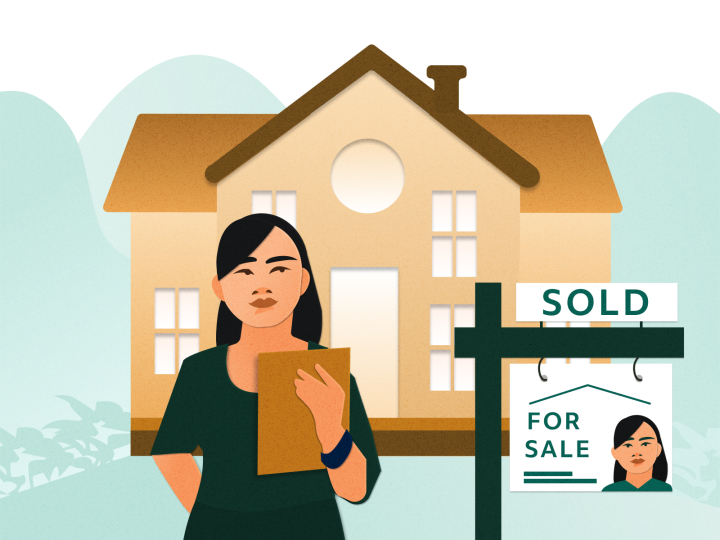The Future of Property: Patterns and Opportunities to Enjoy
As the property landscape evolves, it ends up being significantly necessary to understand the emerging fads and chances that will specify the market in the coming years. Technological innovations are improving transactional processes, while a growing focus on sustainability shows altering customer priorities. In addition, market changes and the surge of remote work are affecting real estate choices, particularly in suburbs. With these characteristics at play, a more detailed assessment of the strategies and adjustments essential for success exposes interesting opportunities that might improve investment methods and market habits.
Technological Advancements in Real Estate
In the last few years, the real estate industry has embraced a wave of technical technologies that are changing standard techniques. These advancements have actually substantially improved performance, openness, and decision-making processes within the sector. Among the most notable innovations is the surge of large information analytics, which permits realty experts to assess market patterns, forecast residential or commercial property values, and recognize financial investment chances with extraordinary accuracy. This data-driven strategy makes it possible for stakeholders to make informed decisions and lowers the risks linked with residential or commercial property purchases.
Furthermore, online truth (VIRTUAL REALITY) and increased fact (AR) modern technologies are revolutionizing residential property advertising and marketing by offering immersive experiences for prospective customers and tenants. These devices permit customers to perform online scenic tours of buildings, thereby enhancing the search procedure and enhancing consumer interaction. Blockchain modern technology is getting grip as a way to secure purchases and keep transparent documents, thus decreasing fraud and speeding up the closing process.
Smart home innovations are additionally ending up being significantly widespread, enabling homeowners to keep an eye on and regulate their homes from another location (Real Estate Lockhart). Jointly, these technical innovations are improving the landscape of realty, promoting an extra effective, transparent, and customer-centric market
Need for Sustainable Residences
As customers increasingly prioritize ecological obligation, the demand for lasting residential properties has actually risen in the real estate market. This shift reflects a more comprehensive social pattern toward sustainability, with buyers and capitalists seeking buildings that reduce ecological influence while making the most of power efficiency. Attributes such as solar panels, energy-efficient appliances, and lasting building products are now considered as crucial instead than optional.

In addition, the rise of green communities, which focus on walkability and accessibility to mass transit, better highlights this fad. These advancements appeal to environmentally aware purchasers and advertise a much healthier lifestyle.
As the need for lasting properties remains to climb, sector stakeholders have to adjust to these expectations. By embracing ingenious methods and prioritizing sustainability, the actual estate sector can not only fulfill consumer need yet also contribute to a more sustainable future.
Changing Purchaser Demographics

Additionally, the aging population is improving demand for housing. Child boomers are seeking scaled down homes that provide accessibility and low maintenance, commonly preferring metropolitan setups with close-by services. This shift necessitates a concentrate on multi-generational housing options that accommodate varying requirements.
In addition, social diversity is playing a pivotal function in genuine estate fads. As these group changes continue to evolve, actual estate experts have to adjust their approaches to address the demands of these diverse customers (Real Estate Lockhart).
Increase of Remote Job Effect
Increasingly, the increase of remote job is changing the property landscape, motivating significant shifts in purchaser choices and place options. As employees take pleasure in the versatility of functioning from home, numerous are reassessing their domestic demands, bring about a rise sought after for buildings in country and rural areas. This pattern is largely driven by the need for more large living atmospheres that can suit home workplaces and a better quality of life.
Furthermore, metropolitan facilities, once the centerpiece for purchasers, are experiencing a progressive decline popular as people prioritize cost and accessibility to nature. Genuine estate programmers and capitalists are moving their emphasis towards residential properties that use home office spaces, exterior services, and distance to necessary services.
Real estate professionals should adjust to the transforming preferences of customers, stressing the importance of way of living factors in their marketing approaches. The ramifications of remote job on real estate are profound, shaping future trends and chances.
Financial Investment Opportunities in Arising Markets
Investment opportunities in emerging markets are constantly standing out from genuine estate investors seeking diversity and development possibility. These markets, identified by quick financial development, find boosting urbanization, and an expanding center class, present unique leads for savvy financiers. Countries in Southeast Asia, Africa, and Latin America are witnessing considerable framework enhancements and desirable federal government plans, which better boost their allure.
Realty markets such as residential, commercial, and logistics are experiencing increased need as a more result of metropolitan movement and advancing consumer choices. Especially, cities like Ho Chi Minh City, Nairobi, and Medellín are coming to be hotspots for investment because of their broadening economic climates and youthful demographics.
Capitalists must carry out detailed market analyses to determine key trends, such as changes in population characteristics and economic stability, which can influence property worths. In addition, collaborations with regional real estate firms can help with effective entry and navigating in these markets.
However, it's important to be mindful of prospective threats, including political instability and regulatory difficulties. By considering these variables and taking on a lasting perspective, capitalists can effectively maximize the rewarding possibilities emerging in these developing areas.

Verdict
In conclusion, the future of actual estate will certainly be considerably influenced by technological developments, a growing emphasis on sustainability, and advancing customer demographics. Browsing this transforming landscape will certainly call for tactical partnerships and an eager understanding of market characteristics to utilize on the fads shaping the sector.
As the genuine estate landscape evolves, it ends up being increasingly crucial to recognize the emerging patterns and chances that will certainly define the industry in the coming years. One of the most significant technologies is the increase of huge data analytics, which enables genuine estate experts to examine market patterns, anticipate home worths, and recognize investment opportunities with unmatched accuracy.As consumers progressively prioritize ecological duty, the need for sustainable residential or commercial properties has surged in the real estate market. The effects of remote job on actual estate are profound, forming future trends and possibilities.
Investment opportunities in arising markets are regularly attracting attention from real estate investors looking for diversity and growth potential.